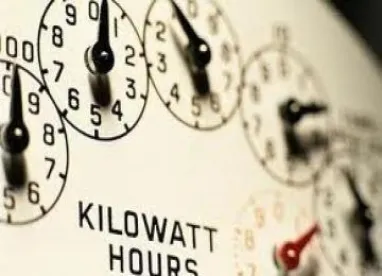On June 10, 2016, the Internal Revenue Service (IRS) issued Notice 2016-36 (the Notice), updating Safe Harbor regarding transfers of property from an electricity generator to a regulated public utility that was previously provided in Notice 88-129, 1988-2 C.B. 541, Notice 90-60, 1990-2 C.B. 345, and Notice 2001-82, 2001-2 C.B. 619 (the Prior Notices). The Notice modifies and supersedes the Prior Notices.
The Prior Notices provided that payments and transfers of property by qualifying electricity generators to regulated public utilities for the construction of interconnection facilities would not be treated as a taxable contribution in aid of construction (CIAC) under section 118(b) of the Internal Revenue Code in certain circumstances: (1) if the payment or transfer was made by the generator to exclusively sell power to the utility, or (2) if the generator also purchases power from the utility, then the payment or transfer satisfied a five percent test (Five Percent Test). The Five Percent Test is satisfied if it is reasonably projected that, during the ten taxable years of the utility beginning with the year the interconnection facility is placed in service, no more than five percent of the projected total power flows over the facility will flow to the generator. For purposes of the Five Percent Test, total power flows mean power flows to or from the generator over the facility.
The Notice updates the Safe Harbor requirements to reflect industry changes. Namely, the Notice recognizes that electricity transmission and distribution systems have evolved and become interlinked over time, requiring coordination of operations across regions. Regional transmission operators (RTOs) measure the available transmission capacity on transmission lines and monitor the activities of parties using space on the lines. When power transfers over transmission lines may overload a line in another part of the grid, RTOs can activate curtailment procedures to stop the power flow, or even cancel a power sale contract. Furthermore, failures and issues on one part of a transmission grid can also affect the flow of power on the grid for a different region. Under the Notice, cross-regional payments and transfers for transmission upgrades and new connecting transmission facilities now qualify for nontaxable CIAC treatment under the Safe Harbor.
The Notice also recognizes that as renewable energy sources such as wind and solar connect to transmission grids, additional connection issues affecting the transmission grid will arise. The Notice recognizes that batteries and other energy storage facilities play an important role in allowing utilities to manage grid frequency as well as a smooth the transition to other energy sources. Thus, the Safe Harbor now applies to renewable energy generators, such as wind and solar generators, as well as to transfers from energy storage facilities to utilities.
The Notice removes the requirement from the Prior Notices that the generator must have a long-term power purchase contract (or a long-term interconnection agreement for wheeling transactions) with the utility constructing the upgrades. Thus, neither a long-term power purchase contract nor a long-term interconnection agreement is required to qualify for the Safe Harbor, provided the other requirements of the Notice are satisfied. Because a long-term power purchase contract or long-term interconnection agreement is not required under the Safe Harbor, generators (including wind and solar generators) that are interconnected with a distribution system rather than a transmission system may contribute interconnection facilities to a utility that qualifies under the Safe Harbor, provided the other requirements of the Notice are satisfied.
The Notice also provides that power purchases by a generator from parties other than the utility will not be taken into account for purposes of calculating the Five Percent Test in applying the Safe Harbor. With respect to supporting the Five Percent Test, the Prior Notices provided that a generator’s projections, if practicable, should be supported by a report from an independent engineer. The Notice now provides that such projection “must be supported by appropriate documentation,” which should make it easier for generators to satisfy this requirement of the Safe Harbor. Finally, the Notice provides that a change in a utility’s treatment of a transfer of property or payment, including a change to or from the Safe Harbor method of accounting provided in the Notice, is a change in method of accounting. Such change in method of accounting is an automatic change.
The Notice provides that the Safe Harbor applies to transfers of interties meeting all of the requirements of the Notice that are made on or after June 20, 2016, but that taxpayers may choose to rely on the Safe Harbor for qualifying transfers made prior to June 20, 2016. The Notice states that the IRS will not issue private letter rulings involving the Safe Harbor.
These changes are welcome by the industry. The Notice provides clarity to payments for, and transfers of, transmission upgrades and new connecting transmission facilities. The Notice can be found here.





 />i
/>i
